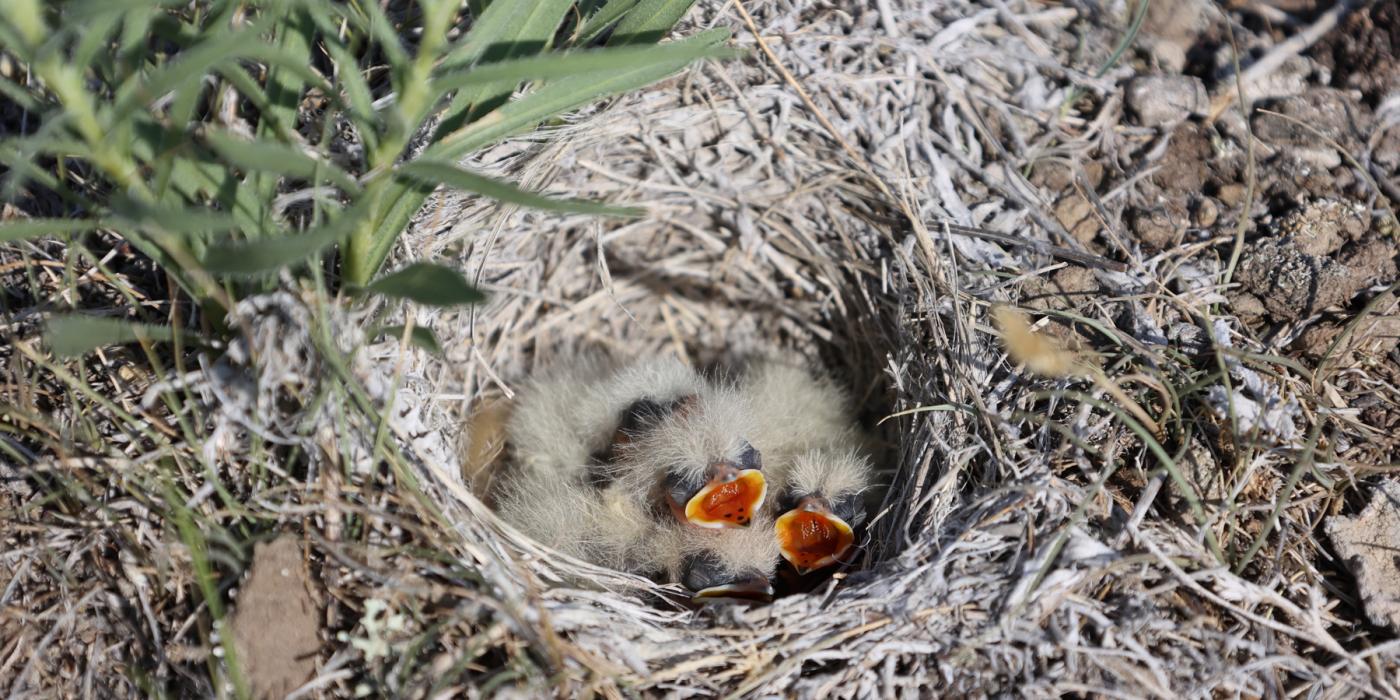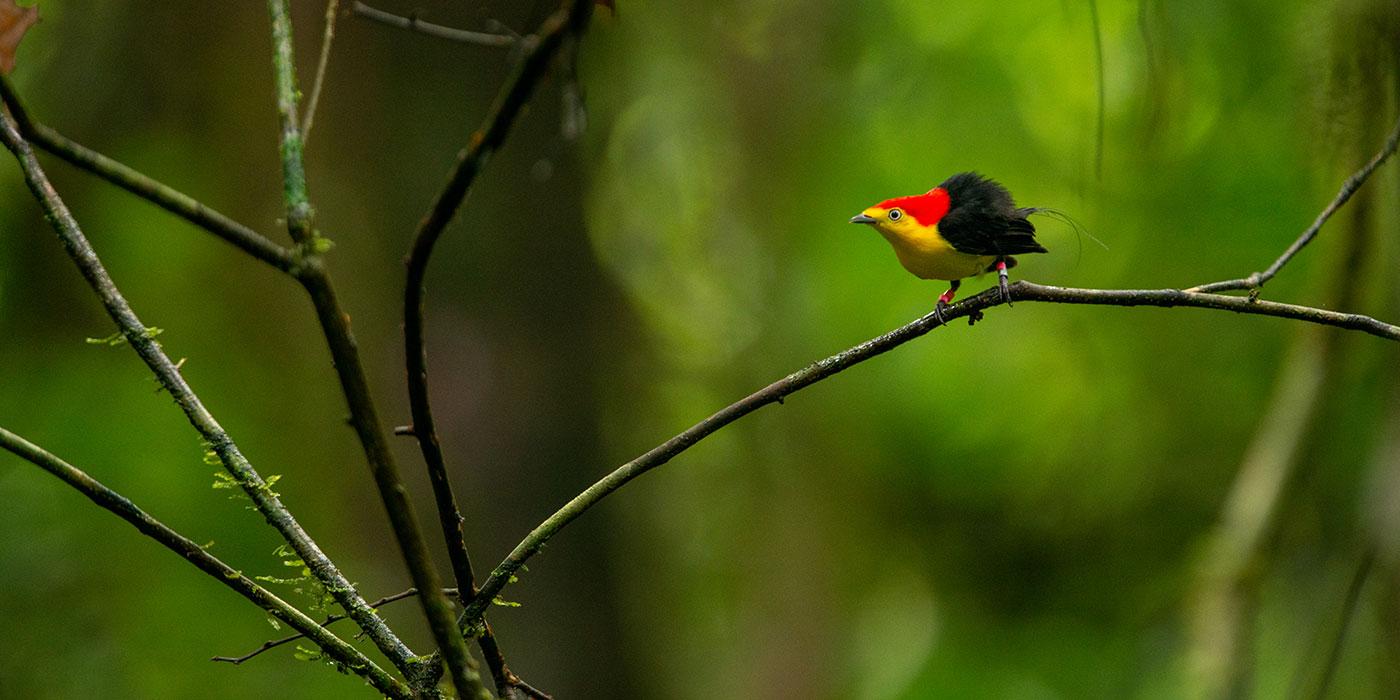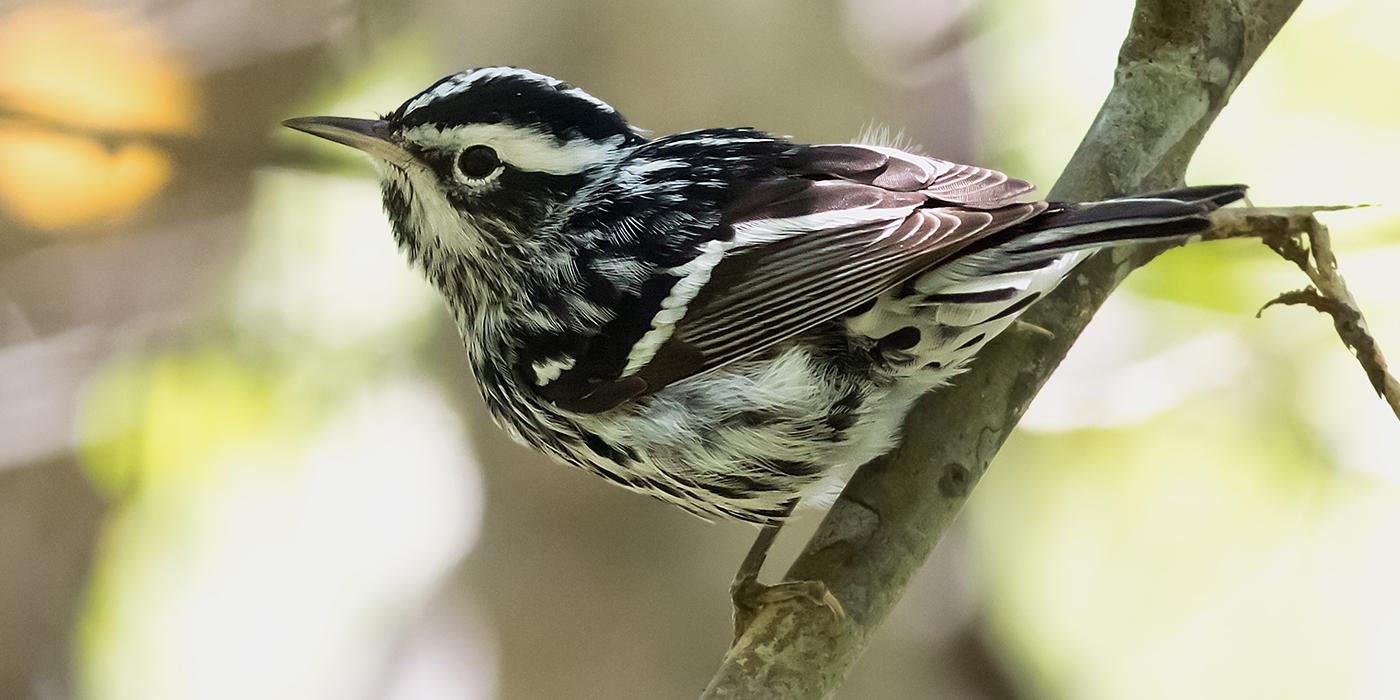Travel Alert for Migratory Birds: Stopover Sites in Decline

Importance of Stopover Sites
Imagine you have been travelling in your car for hours. You are hungry, thirsty, tired, and need to stop soon for a break.
Suppose you've made this trip before and you're counting on that certain gas station and food mart that has come to your rescue in the past. You know you're getting close—you recognize that bend in the road ahead—and you breathe a sigh of relief as the store comes into view. You're cutting it close this time; the fuel gauge is verging on empty! Ominously, you see a sign on the store front as you pull up to the gas pumps. The sign reads CLOSED! You are miles from the next station! What are you going to do?
As a human in this predicament, you may be able to get on the cellular phone and call for help, or a passing motorist might assist you. A migrating bird faced with such a dilemma may not have any viable options. A one-way trip for most Neotropical migrants (birds that breed in the United States and Canada and winter in Latin America and the Caribbean) is at least a couple thousand kilometers (over one thousand miles).
Although birds accumulate fat reserves of up to 50% of their body weight in preparation for departure, the rigors of long distance flight require most birds to rest and refuel several times before they reach their final destination. Without places along the way that provide an adequate food supply for the quick replenishment of fat reserves, shelter from predators, and water for rehydration—places referred to as stopover sites—these travellers are doomed!
Declines in the numbers of many Neotropical migratory bird species have been detected over the past several decades. When scientists began to decipher the possible reasons for these declines, fingers were pointed at 2 main causes:
- fragmentation of breeding habitat and
- destruction of tropical forests on the wintering grounds.
More recently, attention has been given to the importance of habitat during the intermediate stage in the annual, three-part life cycle of migratory birds.
Migration naturally entails risks and has its costs. The phenomenon has evolved because the benefits have outweighed the costs whether by virtue of greater reproductive success in the insect-rich temperate zone or increased survivorship over the winter in the warm tropics.
Nonetheless, death during migration takes a heavy toll. It is estimated that half of all migrants heading south for the winter will not return to breed in the spring.
Predation and bad weather are two natural causes of mortality during migration. Collisions with tall buildings, windows, and other structures; being shot or trapped by hunters; and getting struck by automobiles are a few of the numerous human-made dangers. The continued loss and degradation of stopover habitat, however, is potentially the greatest threat of all.
Stopover Hot Spots
A consideration of the movement patterns of songbirds and shorebirds as they migrate across North America reveals where, on a broad scale, many of the important stopover areas are during this portion of the trip.
Songbirds returning from Latin America to breed in the eastern United States and Canada take either an overland route through Mexico or an overwater route across the Gulf.
For the birds that make the minimum 18-hour flight over the water, the coastal woodlands and barrier islands along the northern Gulf coast mark the first opportunity for landfall. This coastal area therefore contains key stopover sites for many migrants.
The remainder of their trip northward consists of a series of nocturnal flights, each lasting four to six hours and spanning an average of 50-75 kilometers (30-50 miles). These flights are punctuated by stopovers ranging from 1 to 5 days.
As the birds move north in waves, they fan out across the eastern U.S., feeding on the all-you-can-eat buffet of insects that hatch out in synchrony with the unfurling of new leaves. This broad-front movement pattern means that songbird stopover sites are widely dispersed across the wooded areas of the eastern U.S. in the spring.
In the fall, the Atlantic coast takes on greater significance as a migration highway. Migrant traffic is particularly heavy along the coast from southernmost Canada to North Carolina, as many birds depart from along this stretch on nonstop flights over the western Atlantic Ocean to the Caribbean and points farther south.
Prevailing northeasterly winds make such marathon flights possible. Bottlenecks of migrating birds occur at the tips of the Cape May and Delmarva peninsulas as birds funnel into these relatively small land masses to refuel and await good weather before crossing the Delaware Bay and the Chesapeake Bay.
These peninsulas, therefore, harbor important stopover sites. For those birds heading south in the fall across the Gulf of Mexico, the Gulf coast is again an important area for stopovers.
Stopover sites in a large portion of the western United States are restricted to relatively defined areas. Songbirds looking for stopover sites in this part of the country rely heavily on shelter belts and hedgerows in agricultural areas, and desert oases and riparian corridors in the more arid regions.
In the fall, higher elevation sites—especially mountain meadows—become important because of the abundant populations of insects which peak late in the season. Also in the fall, at lower elevations, foothill riparian areas provide important fruiting plants for birds such as tanagers and grosbeaks.
Critical stopover sites for shorebirds are easier to pinpoint because migrating shorebirds congregate conspicuously at a number of key locations across the globe. In North America, the following stopover sites each support at least several hundred thousand shorebirds every year:
- the Copper River Delta in southern Alaska;
- Gray's Harbor in Washington;
- the Bay of Fundy in Nova Scotia and New Brunswick;
- the Cheyenne Bottoms in Kansas;
- the Delaware Bayshore of New Jersey and Delaware;
- and the prairie pothole region of the northern U.S. and southern Canada.
These sites, along with a handful of others, are cornerstones of the Western Hemisphere shorebird migration system.
The Hilton versus the Bates Motel: Quality Differences in Stopover Sites
Unless constrained by bad weather or insufficient fat reserves, birds are selective and they will search for a preferred habitat type in which to stop over. When and where a migrant makes a stopover, and the length of time spent at a particular stopover site, depends on several factors, including the condition of the bird (especially the amount of fat reserves), weather, wind direction, availability of a suitable place to land, and habitat quality.
Based on observations made of migratory landbirds arriving on the northern coast of the Gulf of Mexico, researchers from the University of Southern Mississippi have shown how these factors interrelate.
If the winds are from the south and the weather calm as the birds reach the coastline, most will continue flying farther inland, if they have sufficient fat reserves. Those that promptly stop in the coastal forests under such fair wind and weather conditions do so because they are running out of steam, i.e., fat.
When winds are from the north or there are thunderstorms in the area, most birds, whatever their fat levels, will be forced to land along the coast. Birds with lower energy reserves will remain in the stopover area for more than a day in order to put on more fat, while those in better condition will set off again the night following their arrival, provided the wind and weather are favorable.
The same researchers found that birds that make stopovers on the Louisiana coast gain weight quickly. The average stopover there is 2 days and the birds gain 3-5% of their body weight per day. Birds of the same species that land on islands off the coast of Mississippi tend to be in poorer condition than those that land on the Louisiana mainland, and yet most birds leave the islands the night following their arrival.
Those that stay remain for 1 or more days, but rarely do they gain weight. The difference between whether the birds stay or quickly move on, and whether those that stay gain weight or not, is due to the quality of the habitat.
The vegetation differences between the 2 locations mean differences in the types of insects that are available as food: the insects adapted to the tough, dry needles and leaves of the Mississippi pines and shrubs are less digestible and lower in caloric value than the insects—especially the moth larvae—which are abundant in the more lush Louisiana forests.
These findings demonstrate that if appropiate habitat is not available for a needed stopover, birds must either fly farther, even if a weakened condition makes it unlikely that they will survive, or remain in poor habitat and risk starving or becoming easy prey for a predator.
The Diagnosis
In his book, Where Have All the Birds Gone, John Terborgh states "Migration is a chain whose strength is that of its weakest link." Since birds spend as much as half of the year or more en route between breeding grounds and wintering areas, the habitats they depend on during this period are critical links to their survival.
Loss and degradation of stopover habitat not only can result in more birds dying while on migration, but it can also have serious repercussions in terms of nesting success. For example, birds heading north are already constrained by the relatively short amount of time available to get to the breeding grounds, establish a territory, pair with a mate, and get on with the further demands of raising young. Late arrival, or arrival in poor condition, on the breeding grounds because of inadequate food and rest en route, is likely to jeopardize a bird's ability to reproduce.
The Prognosis and the Prescription
The importance of coastal habitats as stopover sites for birds is pitted against the desirability of coastal areas as prime real estate. Half of the total United States population now lives within 50 miles of the coast. Projections for the year 2010 predict this number will increase by 60%. This population pressure, combined with accelerating rates of coastal erosion and rising sea levels caused by global warming, poses a monumental conservation challenge.
Inland stopover areas will continue to be affected by land use policies, especially with regards to development, ranching, agriculture, forestry, and oil exploration. A balance between economic needs and the needs of migrants will have to be sought in order for the grand phenomenon of avian migration to continue. Economic growth based on birdwatching and ecotourism is proving to be a successful alternative in a number of key stopover areas across the globe.
The Western Hemisphere Shorebird Reserve Network, the American Bird Conservancy in conjunction with the National Audubon Society, and the Nature Conservancy have programs aimed at identifying and protecting critical stopover sites. If you enjoy the spectacular sights and melodious sounds of the many migratory birds that grace us with their presence each year, do what you can to support these international efforts.
Private landowners can contribute to the cause by providing appropriate trees and shrubs and maintaining wetlands on their property. Numerous local and national organizations, such as the National Wildlife Federation, can offer guidance on how to make your yard hospitable to birds. Collectively such efforts can have a great effect. Remember that reverberations from what happens locally to migratory birds can be felt across the hemisphere!
Further Reading:
- Kerlinger, P. 1995. How Birds Migrate. Stackpole Books, Mechanicsburg, PA.
- Moore, F.R. and T.R. Simons. 1992. Habitat Suitability and Stopover Ecology of Neotropical Landbird Migrants. pp.345-355. In Ecology and Conservation of Neotropical Migratory Birds. (J.M. Hagan and D.W. Johnson, eds.) Smithsonian Institution Press, Washington, DC.
- Terborgh, J. 1989. Where Have all the Birds Gone? Princeton University Press, Princeton, NJ.


